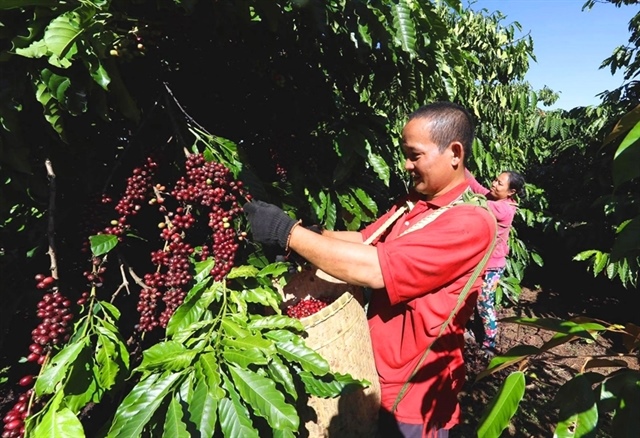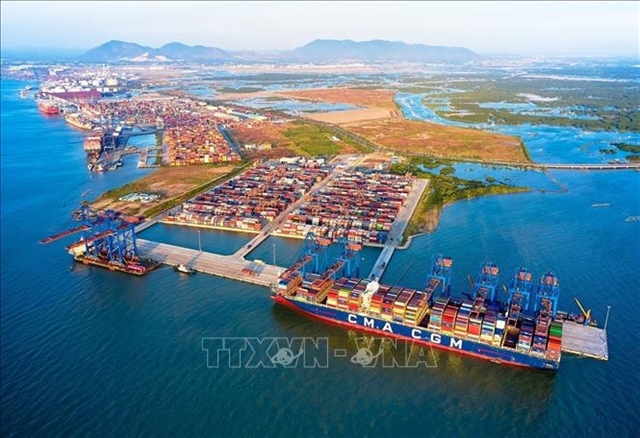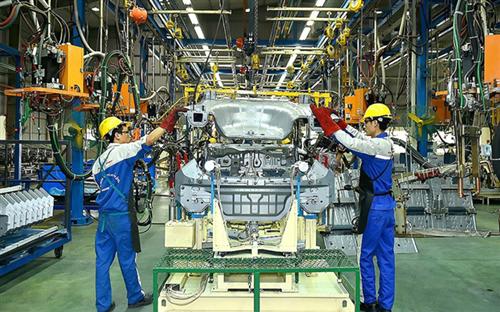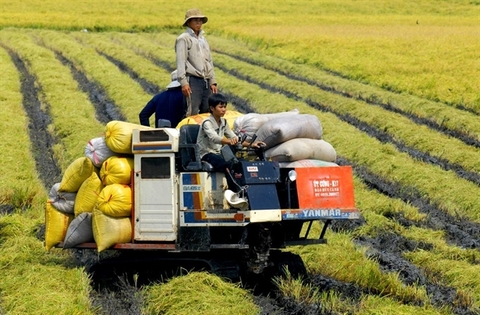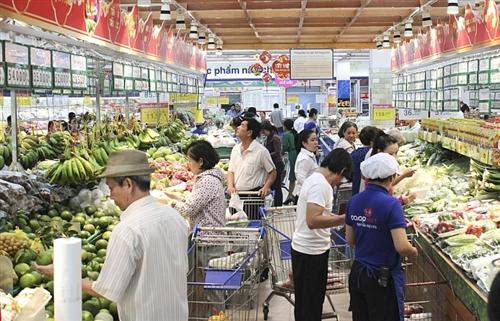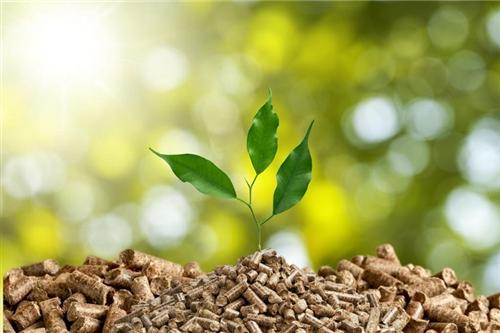Parched Central Highlands stares at a bleak harvest season
Parched Central Highlands stares at a bleak harvest season
It was past 2 p.m. His wife wanted some food for the cows from the farm. Sy did not want to get up.
The 67-year-old farmer was not irritated at his afternoon nap being disturbed. He knew what awaited him and was not enthused. In fact, he dreaded it. Sighing, he picked up a machete and walked to the field right in front of his house.
It was hot. 35 degrees Celsius. He started chopping down the sugarcane to feed the cows. He paused.
He had been growing and harvesting sugarcane for 20 years now. He had never suffered such a loss before.
Tran Cong Sy is just one of many farmers in central Vietnam who are under pressure to find water because of an unprecedented drought.
Normally, each hectare (2.47 acres) would yield 40-60 tons of sugarcane, but for the latest crop, his family got just 14 tons from two hectares.
This time last year, the soil path leading to his family’s farm was overrun with trucks going in and out to transfer sugarcane to traders. In the middle of the farm, hundreds of farmers worked nonstop to chop sugarcane and load them onto the trucks.
Last year, his family harvested more than 100 tons of sugarcane and sold them at VND400-500 (around two cents) per kilo, earning a profit of about VND50 million ($2,152).
And just as he’d done for years, Sy burned the leaves and parts of the stems that could not be used, but kept the roots. Then he waited for the seasonal rain to come. Young buds would spring forth from roots. One sugarcane root could produce three-four crops before the farmers replaced them. He waited and he waited.
The rains would come late May and peak in September and October before the dry season began in November. This time, the rainy season did not happen. His sugarcane did not grow as they should. Most of them were underdeveloped at harvest time in the first months of the year, and traders would not buy them.
His family had no choice but to cut the unwanted sugarcane to feed the cows.
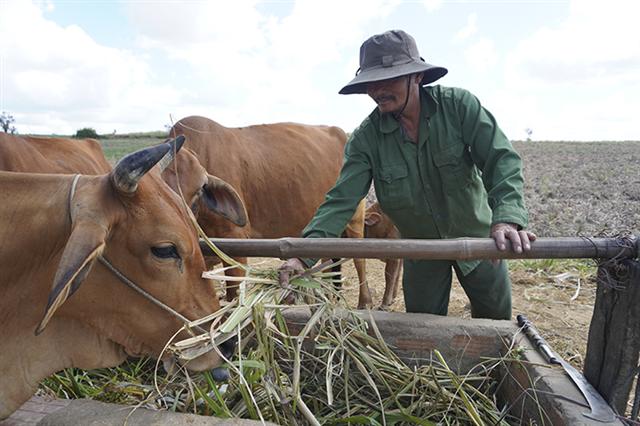
Tran Cong Sy feeds sugarcane to his cows in An Khe Tao of the Central Highlands province of Gia Lai in early March, 2020. Photo by VnExpress/Duc Hoa.
|
As bad as this was, Sy said his family was still luckier than many others because traders had agreed to buy a small amount of sugarcane from his farm 10 days ago, after giving all the negative feedback they could on the produce. However, he and his wife, still do not know how much they will get paid for that batch.
Sy’s family now has 2,000 square meters of sugarcane left on the farm, but it would be hard to find workers because many had quit following the lean harvest. He himself was more than willing to root out all the sugarcane and sell them at any price he could and switch to some of the crop, even though the roots could yield another two crops.
Sy lives in Cuu Dao Village, An Khe Town, Gia Lai Province.
Phan Vinh Tan, deputy head of An Khe’s economy department, said the town is home to some 3,000 hectares of sugarcane with an average yield of 60 tons per hectare. This year, hit by the drought, the 2019-2020 crop has produced half the usual output.
An Khe has 165 irrigation sources for agricultural production, mostly ponds, small lakes and reservoirs. The prolonged drought and serious lack of rainfall have seen them all but run dry.
Many reservoirs of major dams in the area have seen their water levels drop to 10-30 percent of their original capacity and some plants have had to operate in moderation, or even stop functioning, he said.
"Drought has never hit sugarcane farms in An Khe this hard before," Tan said, adding that local authorities have urged farmers to turn to other crops that could live with the heat and water shortage.
‘Empty so soon’
Around 100 kilometers (62 miles) from Sy’s home is a well running 10 meters underground. It belongs to Dinh Loch, 43, a member of the Ba Na ethnic community in Keo Village of Chu Se District.
That well is dry. Loch hired people to dig deeper, but failed to find water.
As the freshwater tank that provides for 170 families in the village has been dried up, Loch’s family now has to carry water from a river home for daily activities while doing the laundry and bathing directly at the river or nearby streams.
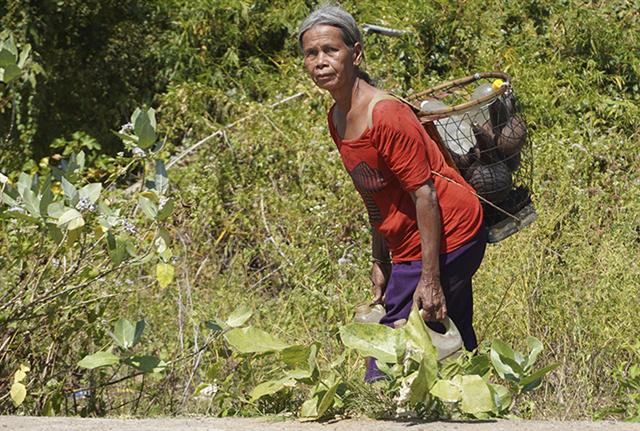
Dinh Loch carries water from a river to her home in Chu Se District of Gia Lai Province. Photo by VnExpress/Duc Hoa.
|
Loch’s well has never run out of water. Every year, even in the middle of the dry season, she had more than enough water and neighbors would take some if they needed.
"I don’t know why it got empty so soon this year," Loch said.
Now her family has to be careful about spending every drop of water they get from the river. It is a tough road they take to carry water home, she said.
Coffee or firewood?
The Central Highlands is the kingdom of Vietnam's major export coffee.
As the mercury hits 36 degrees Celcius, K’Diep of Da Teh Village in Lam Dong Province struggles to water his coffee plants, most of which have already lost leaves and withered, and some have already died.
The two wells that used to irrigate his coffee crop have long run dry.
He and some other families got together to spend VND50 million on hiring people and machinery to dig the two ponds deeper. They got some water, eventually, but as the water level was too low and his farm was on a hill, he needed a pipe system stretching over one km for the water to reach the coffee plants. Then he would have to use two water pumps to get water up the hill.
Despite all of the efforts, the two ponds have now run out of water.
Lam Dong authorities say the water stored at 10 of the province’s biggest lakes have not met designed capacity and almost 8,000 hectares of crops are suffering from a lack of water. The province expects more than 25,000 hectares of crops and 4,000 families to be in trouble this dry season.
The National Center for Hydro-Meteorological Forecasting said the drought situation in the Central Highlands would last until May and that the water levels in rivers are set to drop to the lowest ever, with the flow dropping by an average of 25-75 percent in most rivers, and by more than 90 percent in others.
In Kon Tum Province, bereft of rain for over three months, water level in streams and rivers are 40-80 percent less than the average level at the same time in previous years. Parched fields and dying crops are a stark sight.
Dak Lak has the biggest amount of water stored in the Central Highlands with 605 reservoirs having a total capacity of more than 600 million cubic meters, but water levels at two of its biggest rivers have dropped to 50-70 percent the normal, and thousands of hectares of crops, from coffee to rubber and pepper, are set to suffer from a lack of water.
Gia Lai has not counted the total area of crops hit by drought, but their plight is plain sight. Water levels at its reservoirs and major rivers have dropped significantly, and a picture of severe water scarcity for daily activities and agriculture looms large in at least five districts.
In Dak Nong, another Central Highlands province, it is estimated that water shortage can damage up to 15,000 hectares of crops.
Back in 2016, the five Central Highlands provinces had suffered a historic drought that killed 160,000 hectares of crops, causing 15,000 families with 64,000 people, including 12,000 people belonging to ethnic minority groups, to suffer from hunger.
It does not look good for them this year as well.
In Da Teh Village, K’ Diep broods over a dark fate: "In the next two weeks, if there is no rain, my coffee plants would be nothing but firewood."


